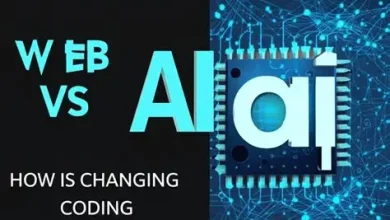
In a world increasingly shaped by artificial intelligence, business leaders face a pivotal question: where does AI create real value – and where does it fall short?
Few business functions expose this tension more clearly than procurement, particularly in the often-overlooked area known as tail spend. These low-value, high-volume, non-strategic purchases – scattered across departments, suppliers, and geographies – are notoriously hard to manage. Yet tail spend is also ripe with untapped potential. For large enterprises, tail spend generally accounts for 20% or more of total procurement, which can translate into hundreds of millions – even billions – of dollars annually for large enterprises
Despite its scale, tail spend is often seen as a low priority. Strategic spend – high-value, core, business-critical purchases – is typically the focus of in-house procurement teams. Tail spend, by contrast, tends to be decentralised, fragmented, and often lacks governance. That makes it an obvious candidate for the power of AI and automation.
But AI alone doesn’t solve the complexities of managing tail spend. What does is a balanced model: one that combines the power of AI with the discernment, contextual understanding, and oversight that only human intelligence (HI) can provide.
This hybrid approach – AI and HI working in concert – isn’t yet common practice, it’s proving to be a powerful strategy for turning tail spend from a cost centre into a source of savings, compliance, and innovation. By applying intelligent automation alongside deep procurement expertise, organisations – often by tapping outsource tail spend specialists – can finally bring structure, visibility, and value to one of the most overlooked segments of enterprise spend.
The Case for AI in Tail Spend Management
Tail spend is a classic example of a big data problem. It involves tens of thousands of transactions, hundreds – even thousands – of suppliers spread across disparate geographies, business units and categories. AI is tailor-made for this environment.
Large language models (LLMs) and machine learning algorithms can categorise spend, match requests to suppliers, flag risks, automate approvals, and generate insights from previously unstructured data. AI can identify where a business is overspending, where compliance gaps exist, and how purchases could be consolidated to drive savings.
It’s not uncommon for organisations to achieve savings of 5%-15% on tail spend by applying AI to increase visibility, automate supplier discovery, and create competition among vendors. For large global companies, that’s a multimillion-dollar opportunity.
Where AI Falls Short—And HI Fills the Gap
Yet for all of AI’s advantages – speed, scale, precision – it remains limited by the data it’s trained on and the lack of oversight – including human insight, ethical judgment, and the nuanced understanding that procurement decisions often require.
For example, AI may flag the lowest-cost supplier for a purchase, but miss recent delivery failures, ESG violations, or geopolitical risks not yet embedded in structured datasets. It might overlook regional nuances, product fit, or relationship dynamics that only experienced procurement professionals can assess.
That’s why human intelligence is essential. Procurement professionals validate AI-generated insights, intervene in edge cases, identify bias in the data outputs, and provide critical feedback that refines algorithm performance over time. HI ensures that AI doesn’t just move faster – but moves in the right direction.
The AI-HI Symbiosis in Practice
An effective AI-HI model is not sequential – it’s symbiotic. AI continuously processes data, surfaces insights, and recommends actions. HI steps in to evaluate edge cases, guide strategy, and provide expert feedback. Over time, the AI becomes more accurate, while the human experts become more empowered by better information.
In the context of tail spend, this combination delivers tangible outcomes:
- Improved supplier matching: AI shortlists relevant vendors; humans validate them based on experience, category knowledge, or recent performance.
- Aligning the buying agenda: Human guidance ensures vendors selected by AI meet the criteria of the line of business making the purchase request.
- Faster procurement cycles: AI accelerates the flow from request to purchase order; humans step in only when judgment or escalation is needed.
- Better risk management: AI flags anomalies; humans assess grey areas – especially where compliance, ESG, or brand reputation is on the line.
- Continuous learning: Human feedback improves the models, making each procurement cycle more efficient than the last.
The value of AI and HI is maximised when applied across the full procurement lifecycle. Each step of the procurement process generates data that can train AI further – benefiting from human intuition and guidance.
When managed holistically, tail spend transforms from an administrative burden to a structured, auditable, insight-rich area of spend that supports business agility and drives measurable ROI.
Tail Spend as a Strategic Asset
What’s often dismissed as tactical is, in truth, strategic. Tail spend touches nearly every department, impacts ESG and regulatory performance, and can open doors to specialist suppliers and innovation that the strategic core of procurement often misses.
As procurement teams face increasing pressure to deliver savings, improve agility, and reduce risk, tail spend is moving up the priority list. And AI on its own won’t get it under control. But AI and HI together can.
The path forward isn’t AI versus human – it’s AI with human, turning complexity into clarity.





